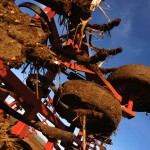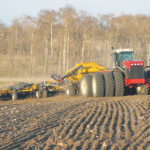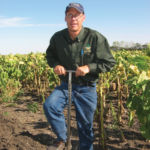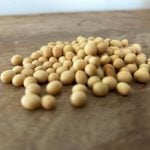
Tag Archives Agronomy

Oats and alfalfa to reduce Corn Belt erosion?

It’s time to make soil great again
Continuing to lose topsoil will make it harder to feed a growing population

Disc tillage not the only answer to corn residue
Recent research on the effect of corn on subsequent soybean crops suggests there may be other alternatives

Planning for a bumper crop of underwear
The Soil Conservation Council of Canada is hoping underwear will be neither tight nor white after two months in the ground

You may be ready for seeding, but is your land?
That early start to seeding is desirable, but not without some risks to manage

Farmers adjust fertility plans after tough fall
There’s still plenty of opportunity to get nitrogen on if you missed the fall application window

Intercropping wheat and soys makes for tighter rotation
The Kutz family has had to improvise but their ideas are working

British no-tillers worry about potential loss of glyphosate
But Tom Sewell says he’ll still find a way to continue his no-till system

Neonic replacement not popular with farmers or beekeepers
They’re too expensive, ineffective and still harmful to bees, to cite just some of the concerns expressed

Soil management, cover crops and recouping costs explored
Farm-specific cover crop integration was the backbone of the latest Manitoba Forage and Grassland Association grazing club workshop


